English Furniture
1/33
There's no tags or description
Looks like no tags are added yet.
Name | Mastery | Learn | Test | Matching | Spaced |
|---|
No study sessions yet.
34 Terms

George III mahogany sideboard
late 18th century
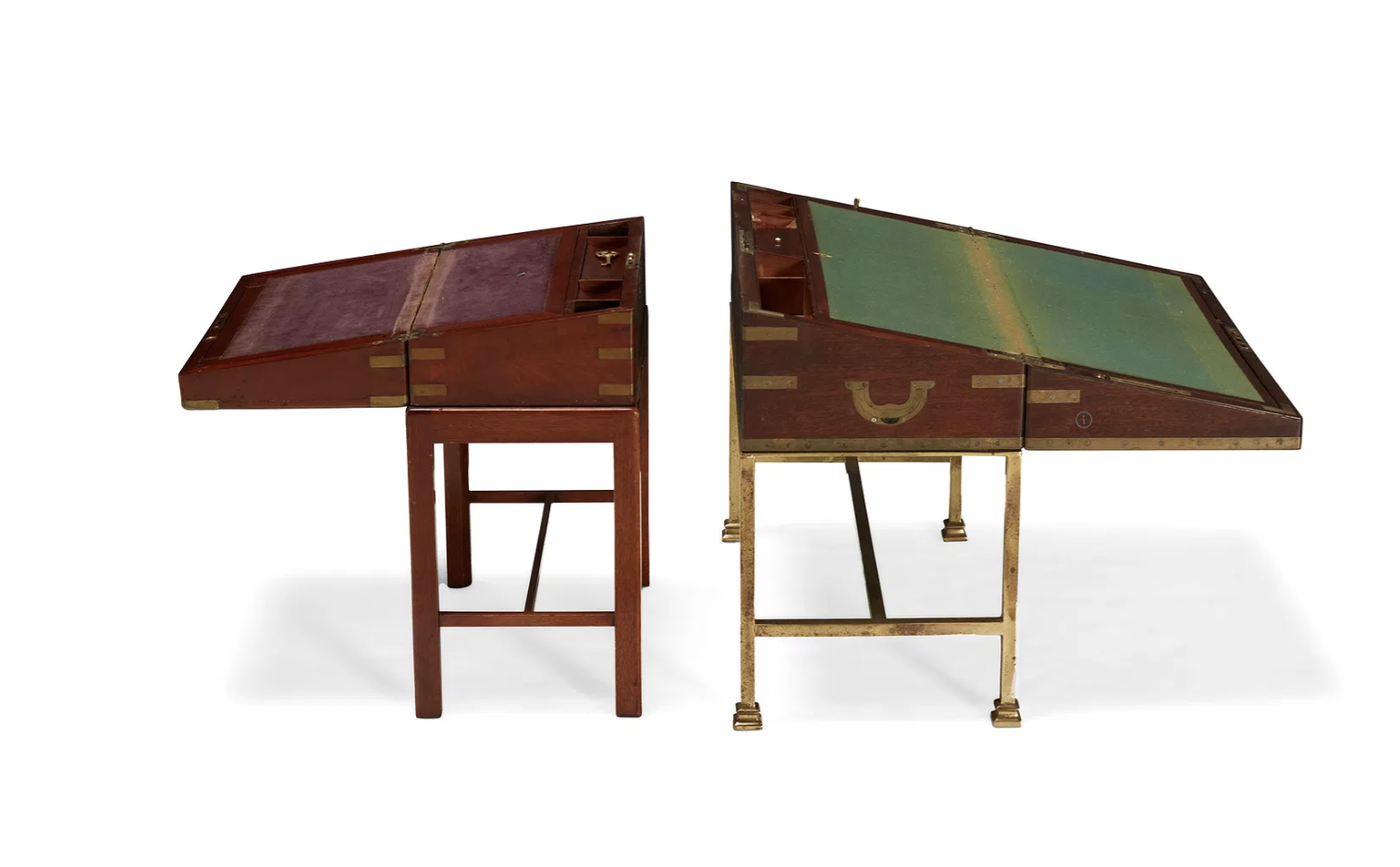
Victorian mahogany writing tables
late 19th century
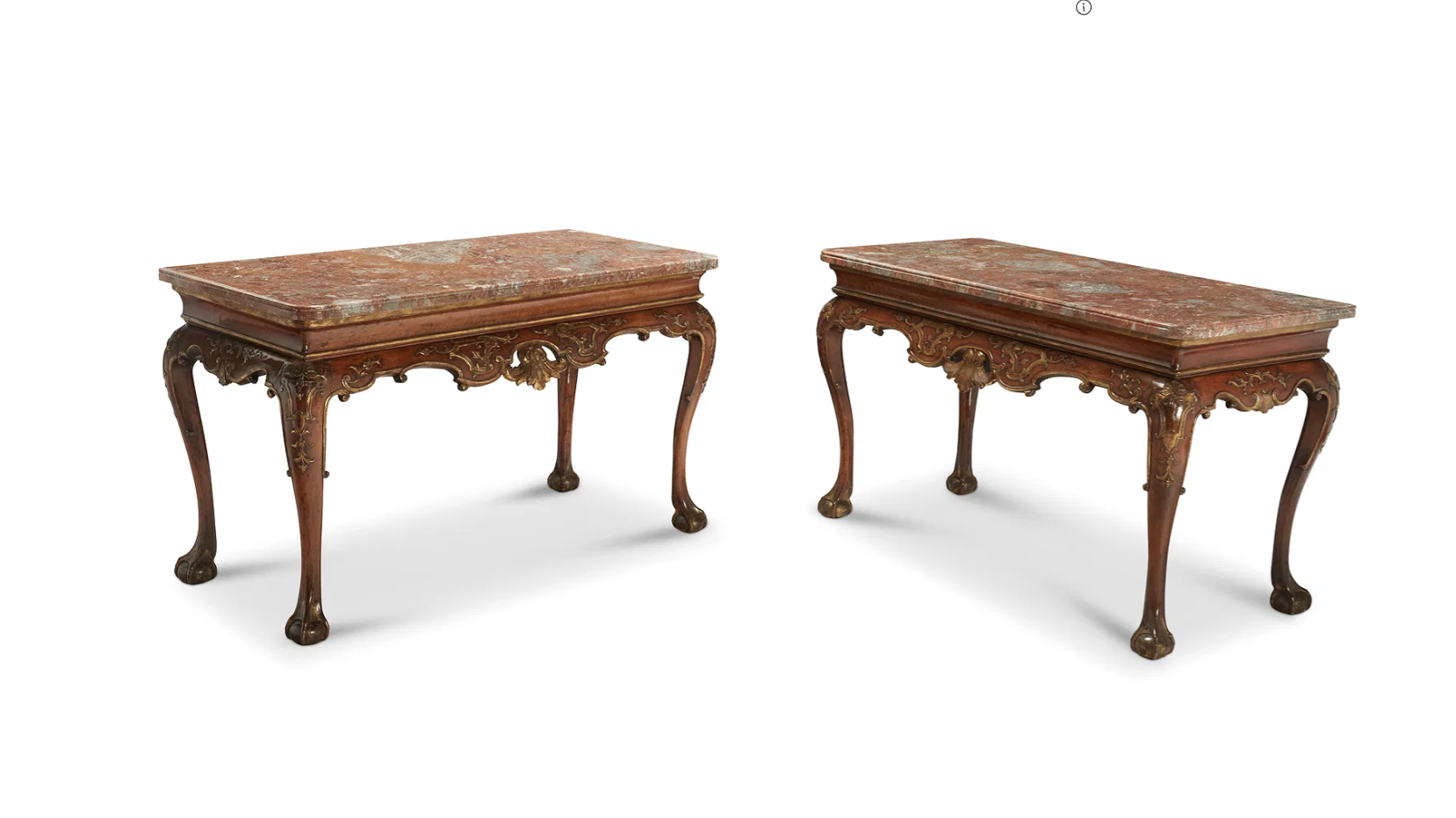
George III walnut console tables
Late 18th century with later elements
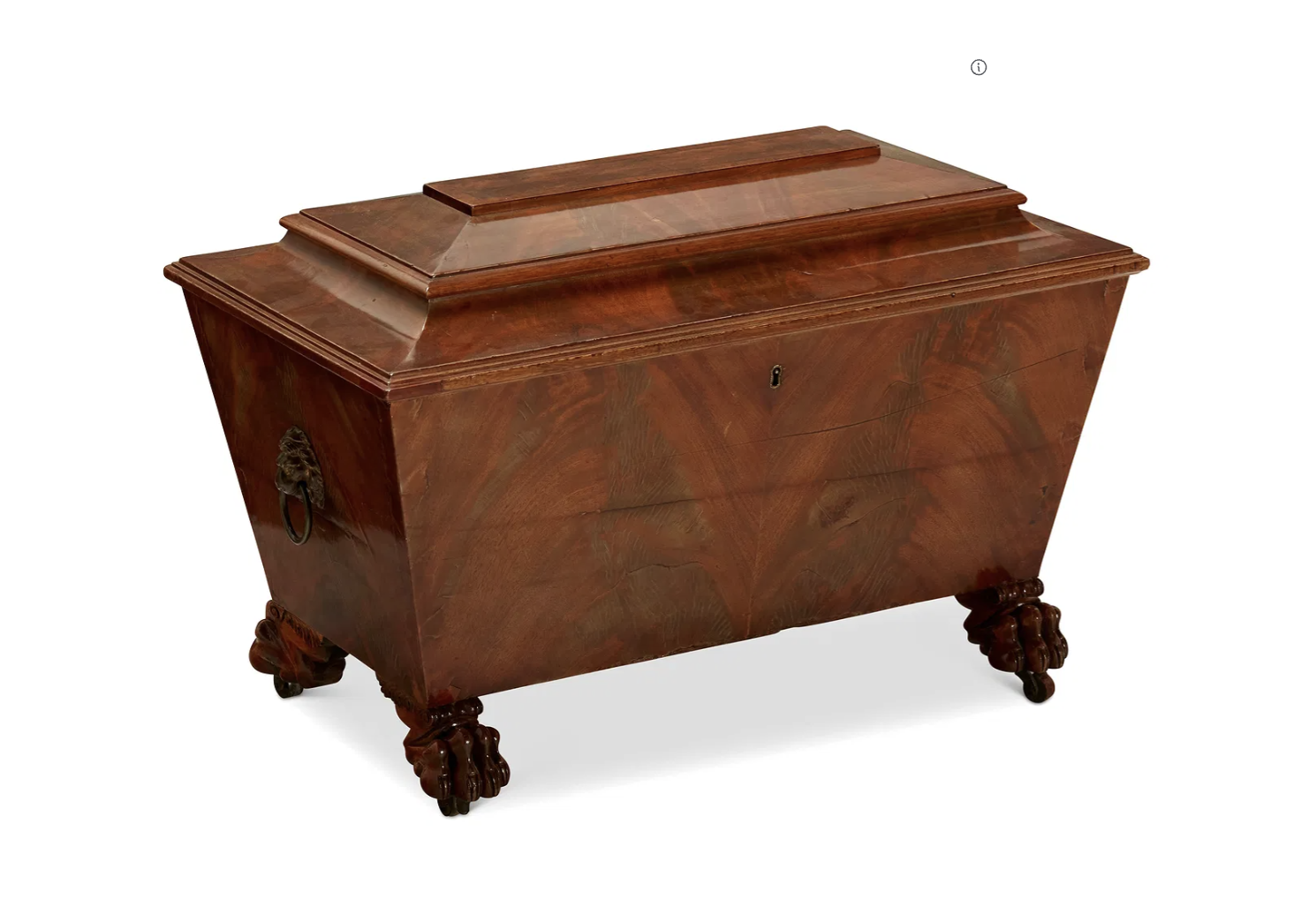
Regency mahogany cellarette
Early 19th century
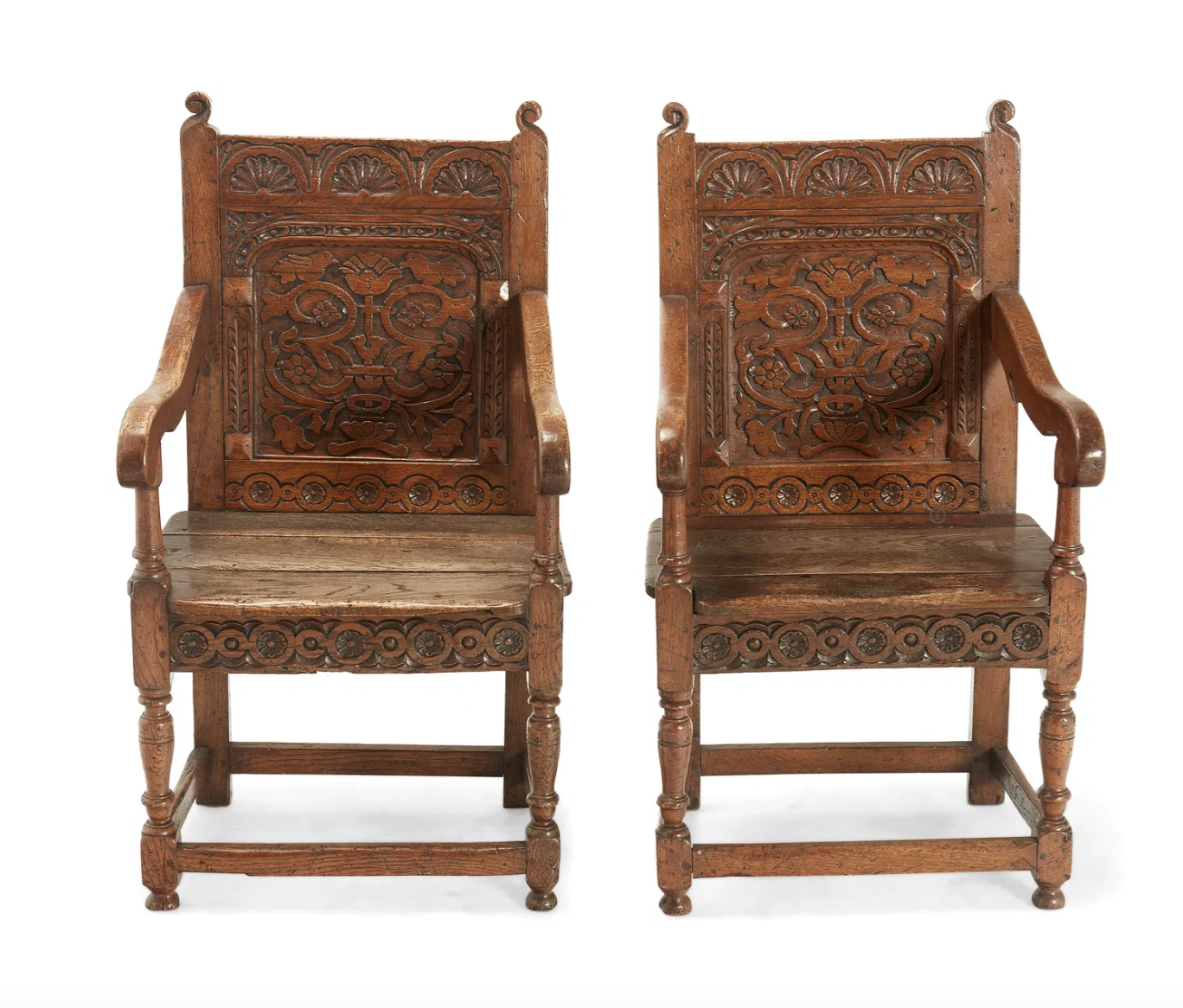
English carved oak wainscot armchairs
17th/18th century
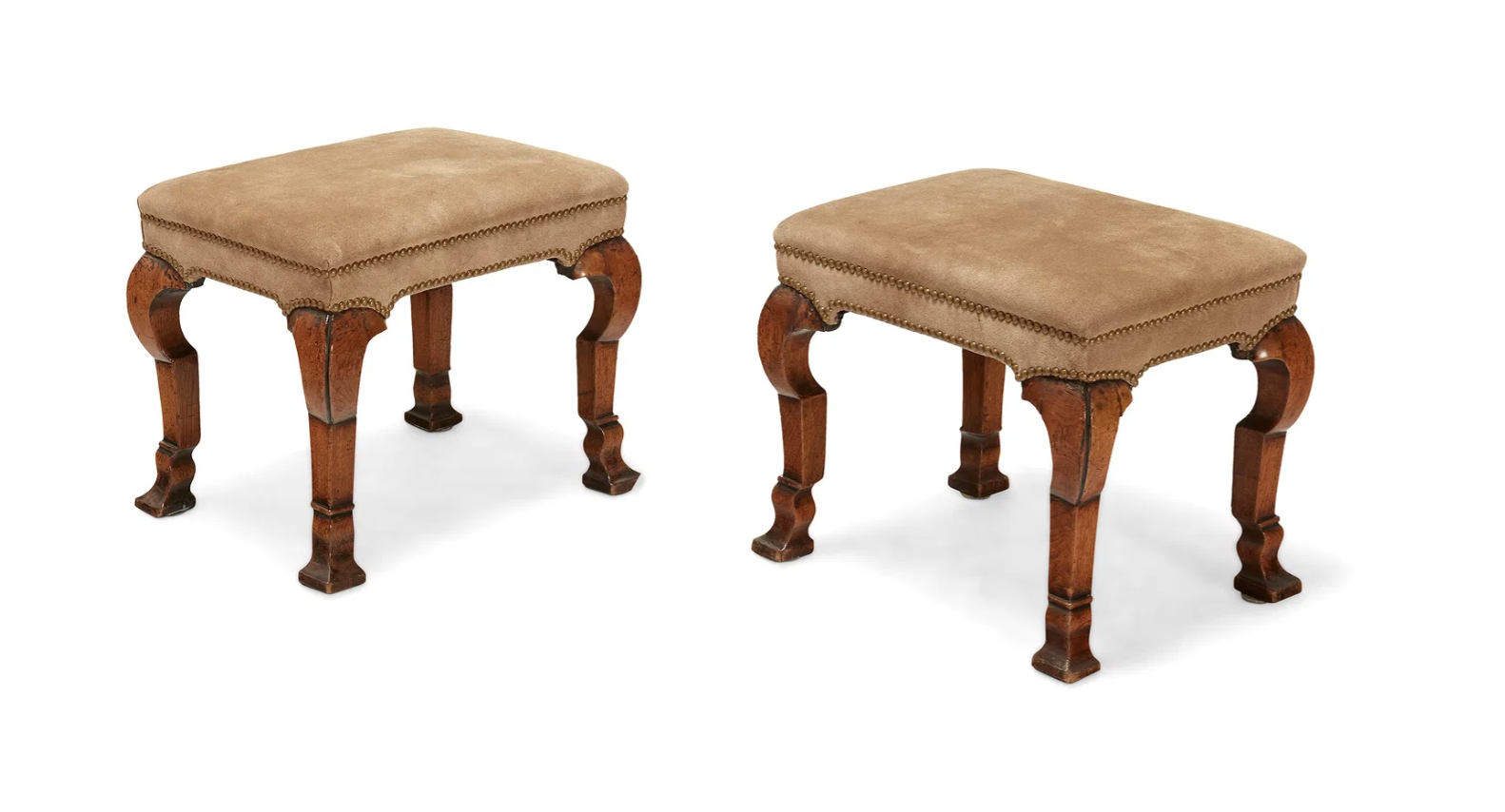
George I walnut foot stools
circa 1720 with later elements
George I
1714-1727
Style: Rococo, Palladian
Walnut was a primary wood, though mahogany was beginning to appear, and furniture often featured simple lines, elegant proportions, and subtle ornamentation.
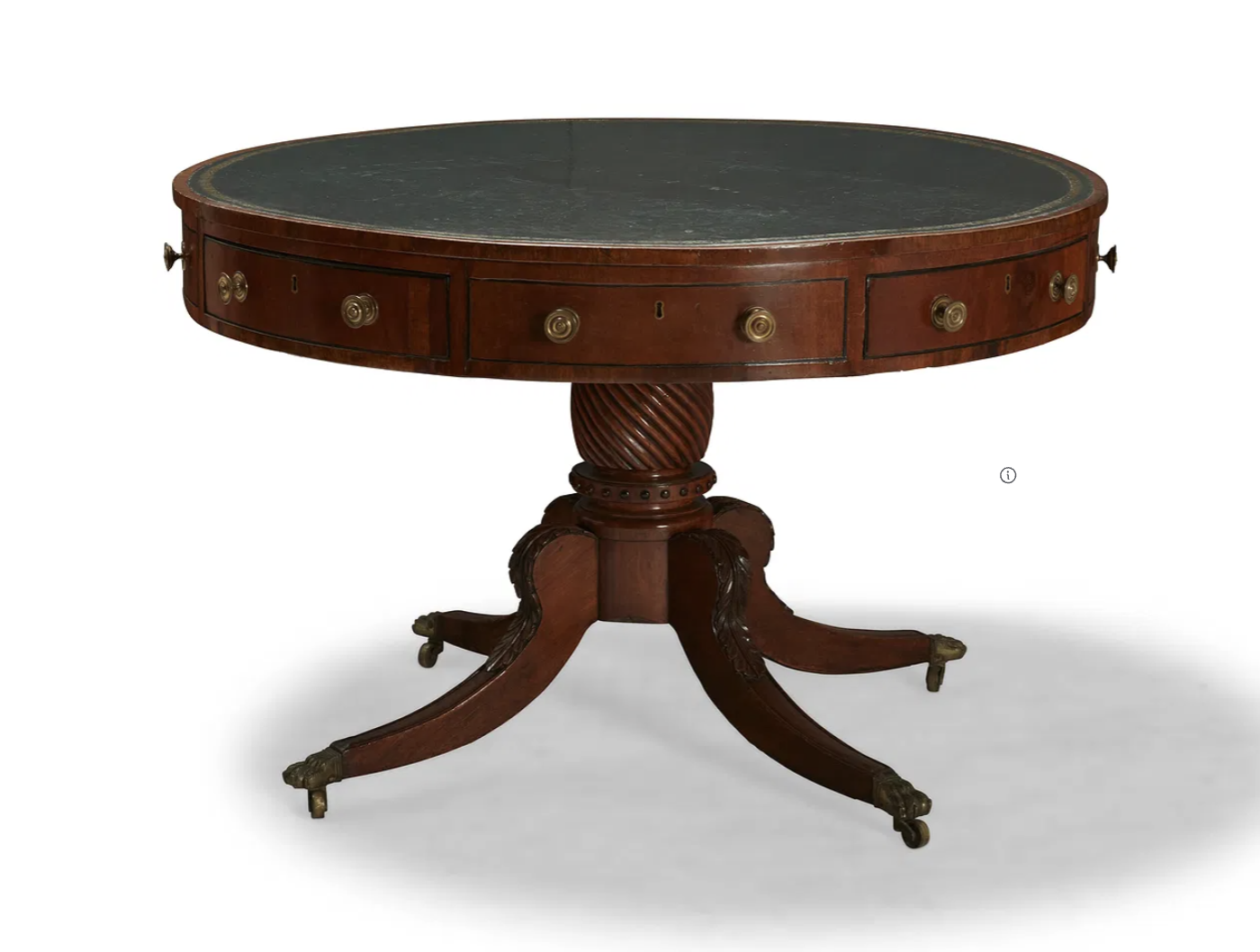
George IV inlaid-mahogany drum table
Early 19th century
George IV
1820-1830
part of Regency period
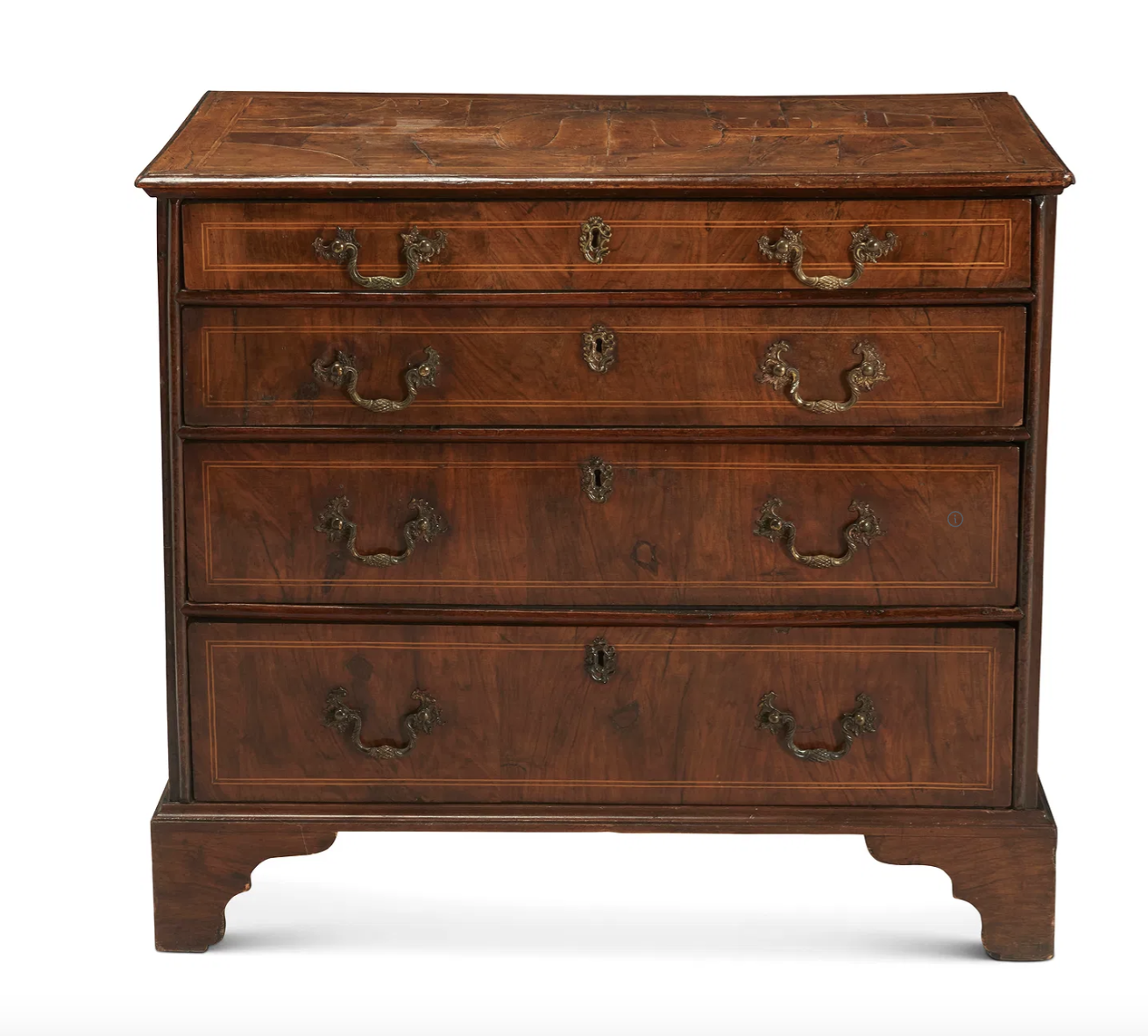
George I walnut small chest
Early 18th century
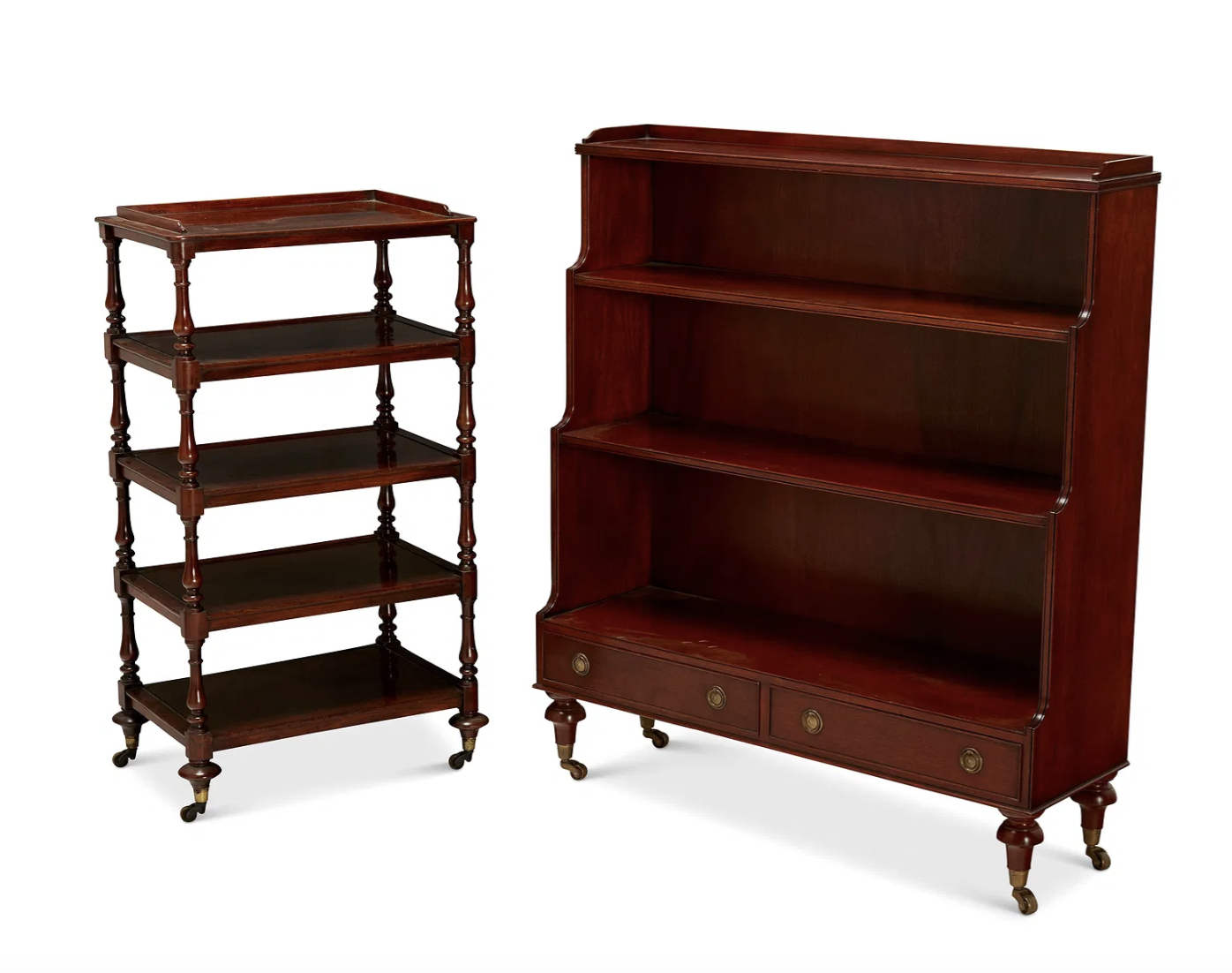
English mahogany whatnots
20th century
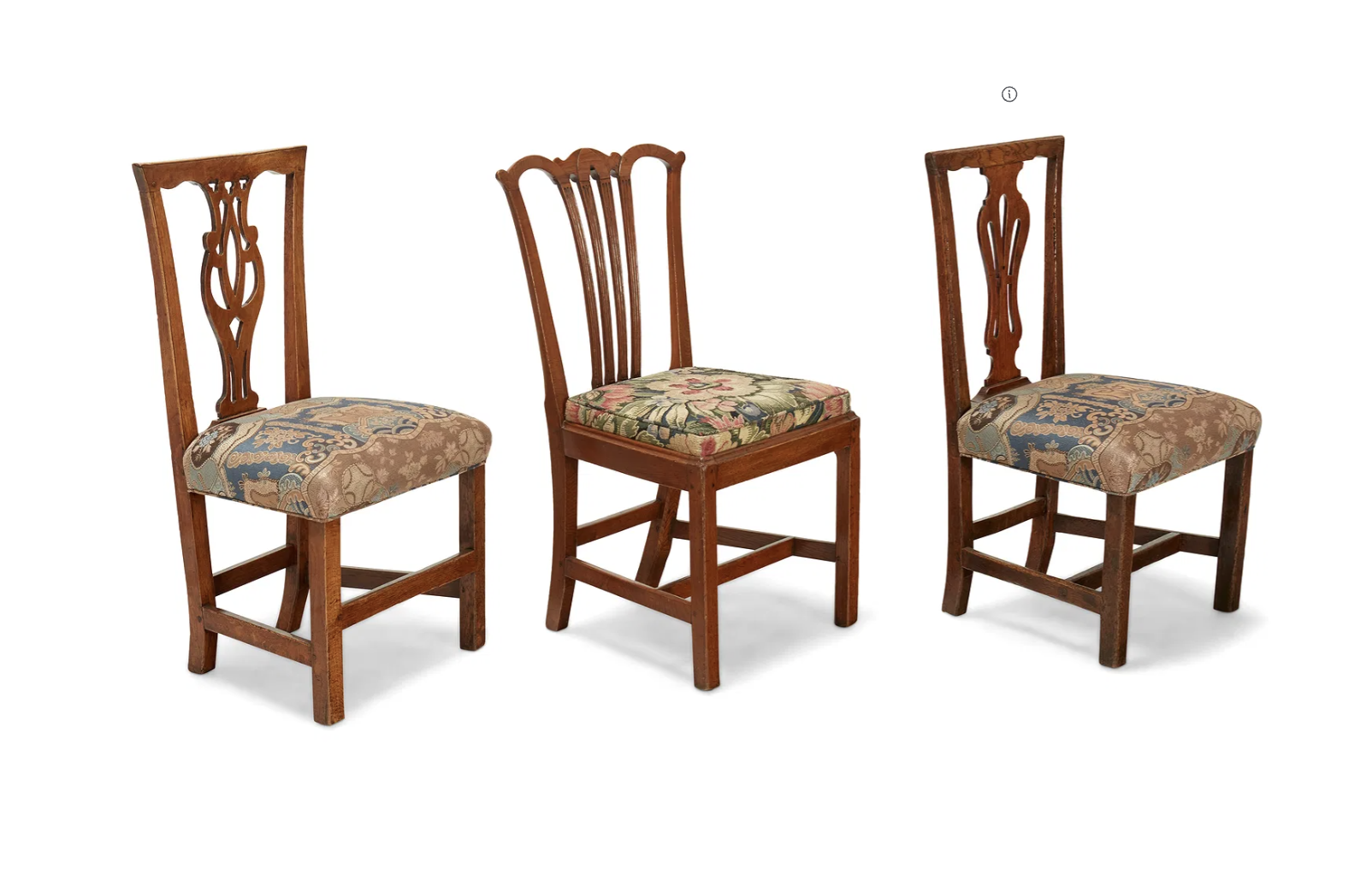
George III Provincial carved wood side chairs
18th/19th century
George III
1760-1811
Styles: Adams Style, Chippendale, Hepplewhite, Sheraton, NeoClassical
transition from the earlier Rococo style to a more refined Neoclassical style
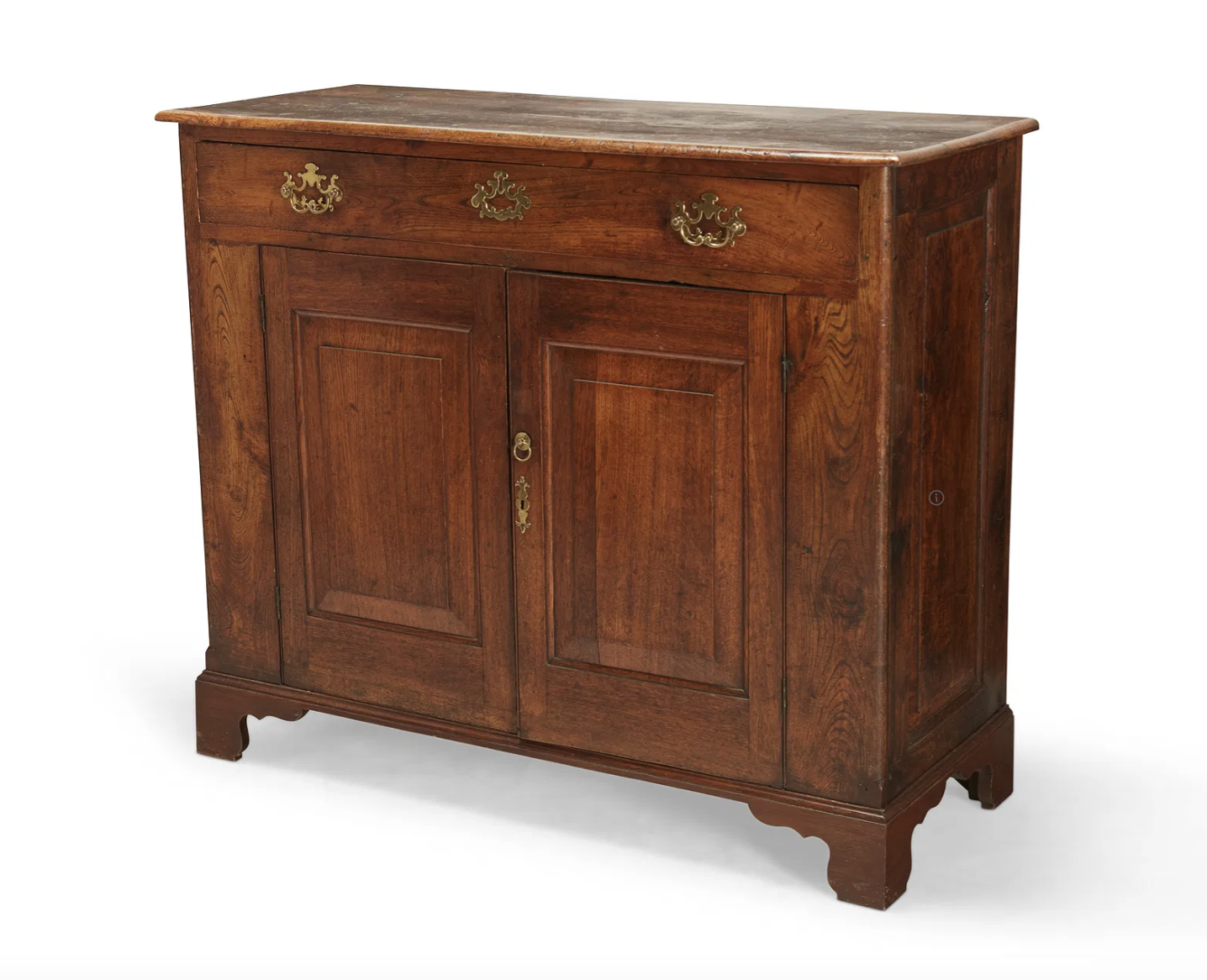
George III oak chest
Late 18th/early 19th century

Regency japanned tea table and pair of side chairs
19th century
Regency
1812-1830
style: neoclassical with Greek, Roman, and Egyptian elements
(includes reign of George III, IV)
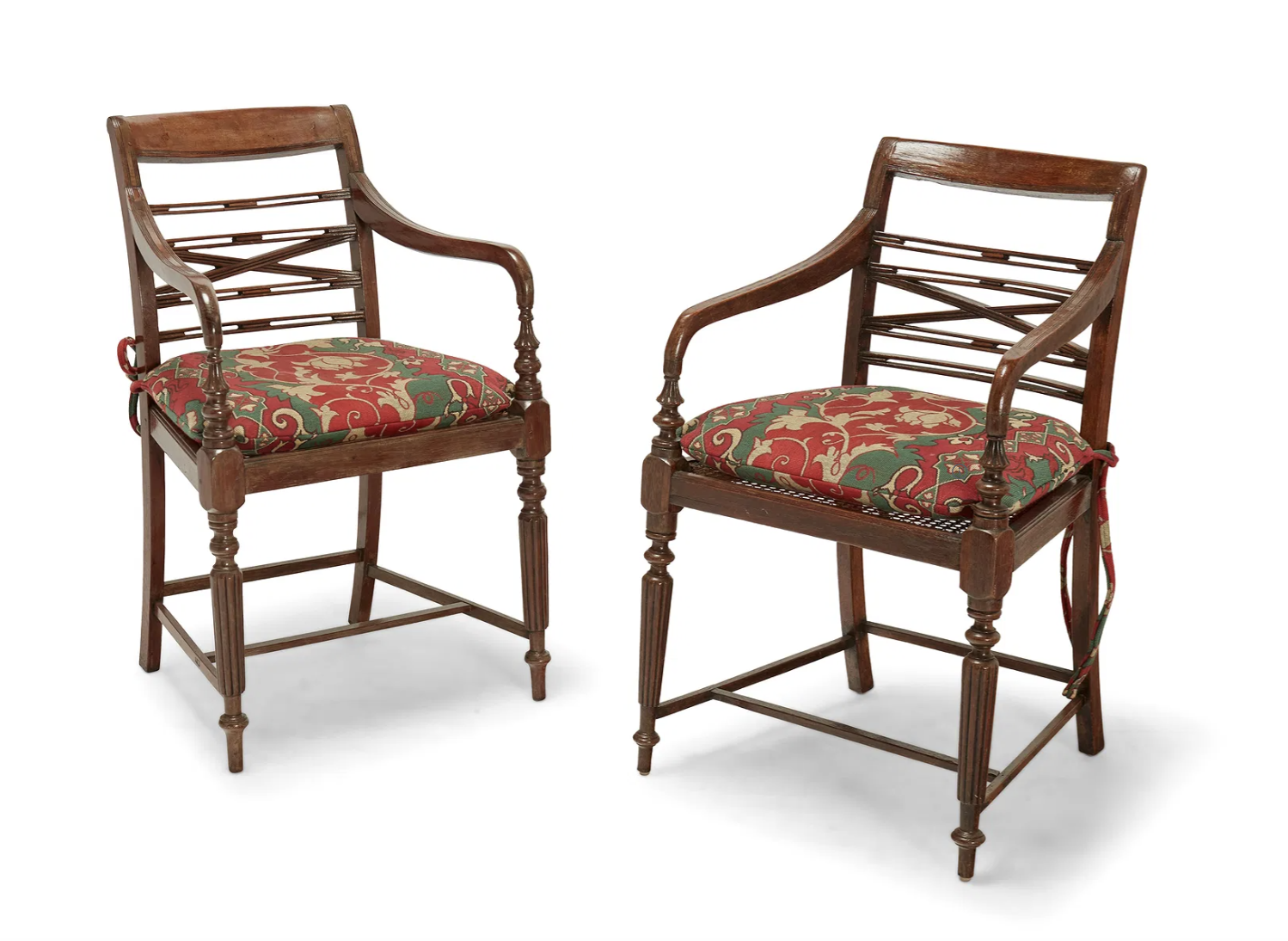
Edwardian walnut open armchairs
Edwardian
1901-1910
King Edward VII’s reign (after Victorian)
Styles: Arts & Crafts, Art Nouveau, Colonial
George II
1727-1760
Styles: Rococo, French, Gothic, Chinese
classic, symmetrical designs, often incorporating elements from classical architecture like columns, pediments, and friezes. Mahogany was a popular wood, and pieces often featured brass detailing. The style emphasizes proportion and balance
Victorian
1837-1901
Style: Eclectic (revivalist, Gothic, Aesthetic, Arts & Crafts, Colonial)
Victorian furniture is known for its ornateness, orderliness, and eclectic approach to unifying design themes from a variety of periods into a coherent framework. Incorporated elements of Renaissance, Rococo and Gothic influences
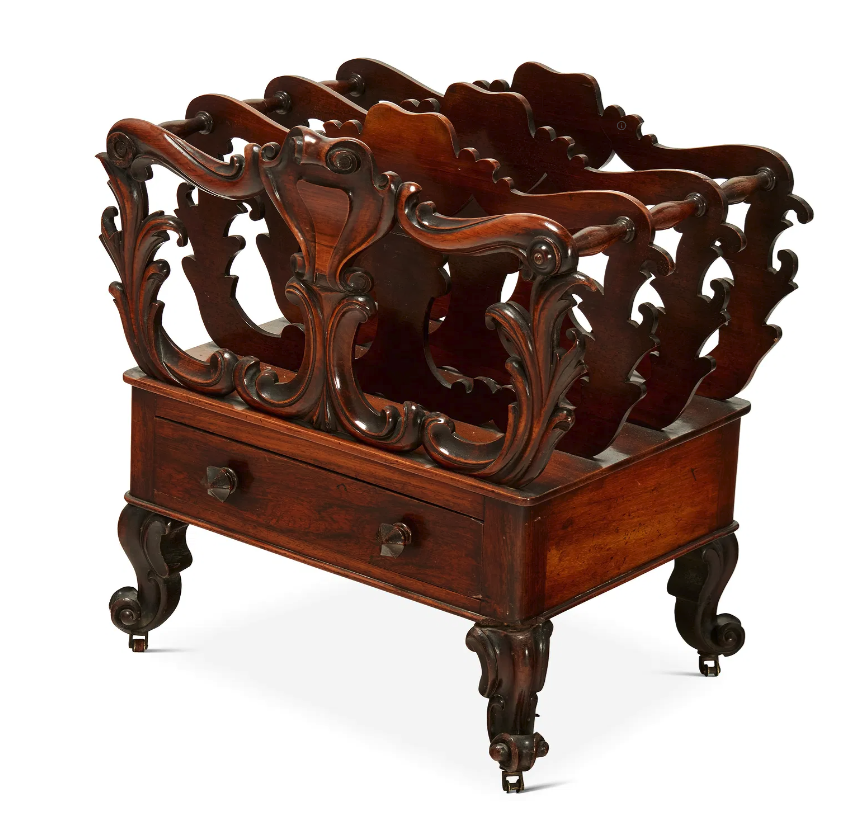
Victorian carved mahogany canterbury
Mid-late 19th century
William IV
1830-1837
After George IV, before Victoria
Style: William IV (Egyptian and Greek Revival)
William and Mary
1689-1694
Styles: Baroque, Dutch, Flemish, French
William III
1694-1702
Styles: Baroque, Dutch, Flemish, French, Rococo
Queen Anne
1702-1714
Styles: Baroque, Dutch, Flemish, French, Rococo
Jacobean
1603-1625
King James I
Styles: Oak, Gothic, Renaissance, Italiante, Flemish
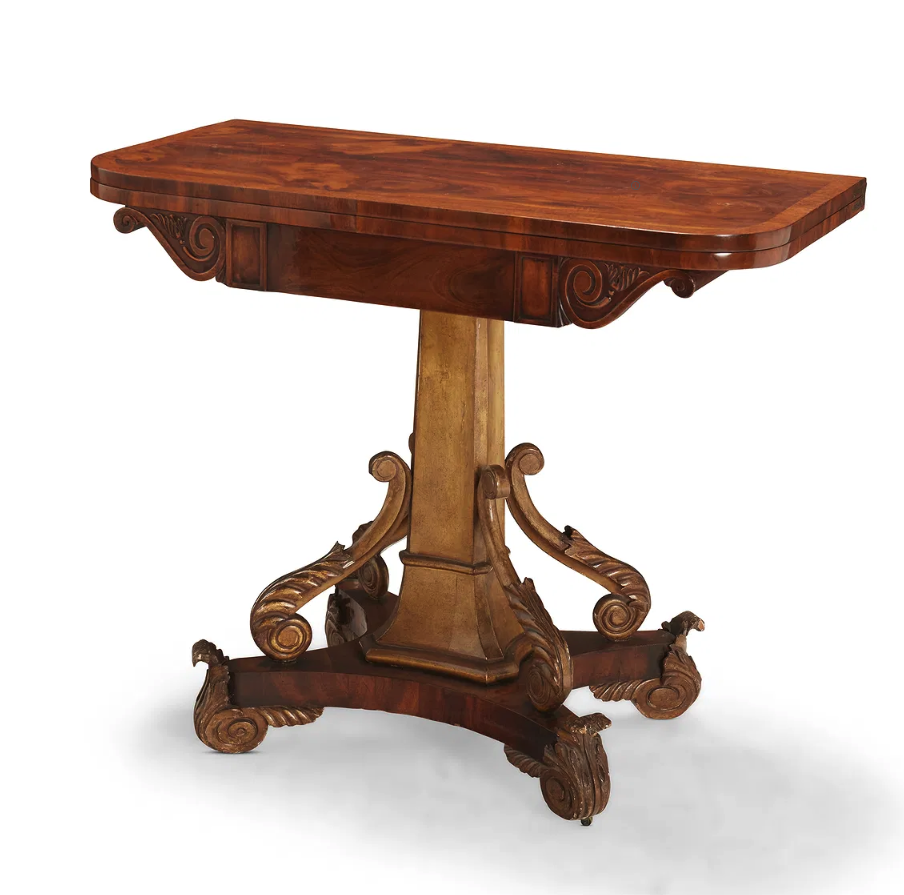
William IV parcel-gilt mahogany games table
Early-mid 20th century, Benjamin Taylor; London
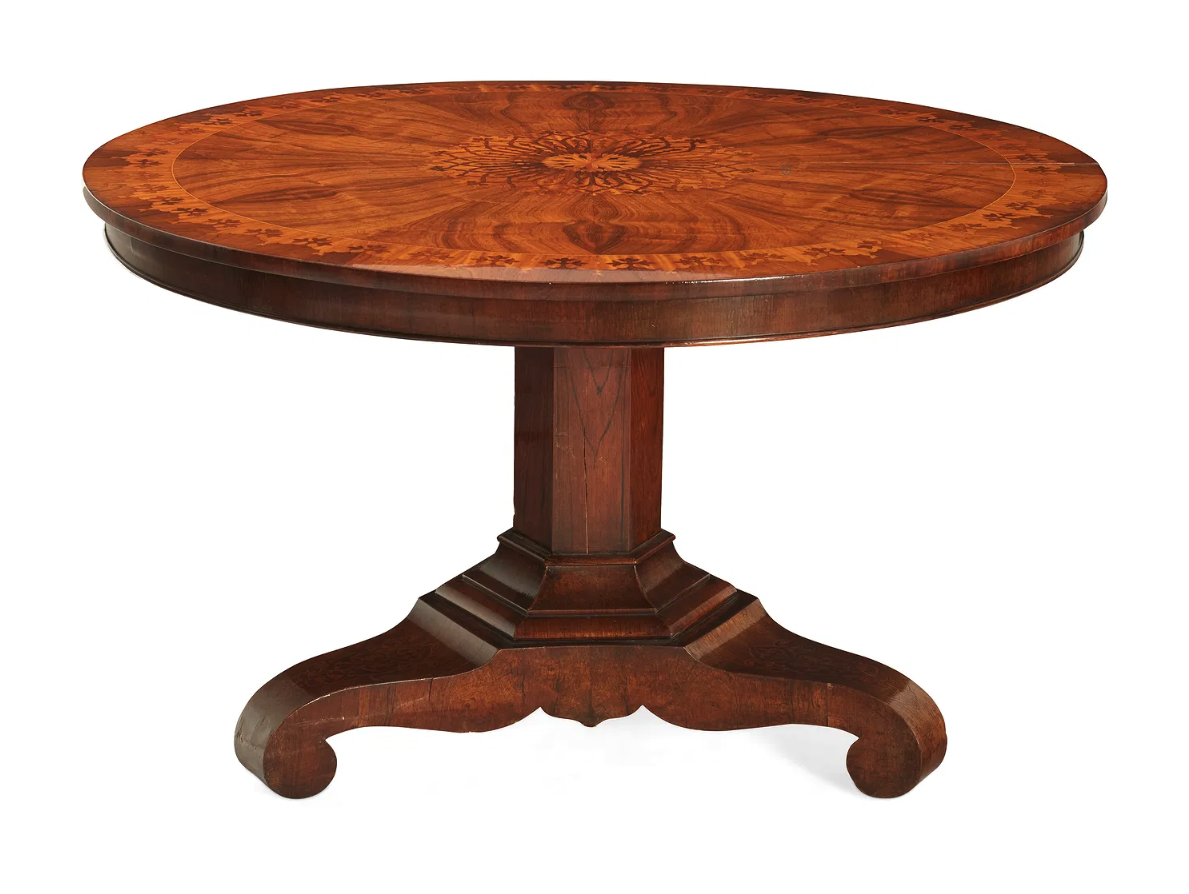
late Regency inlaid rosewood breakfast table
Early-mid 19th century
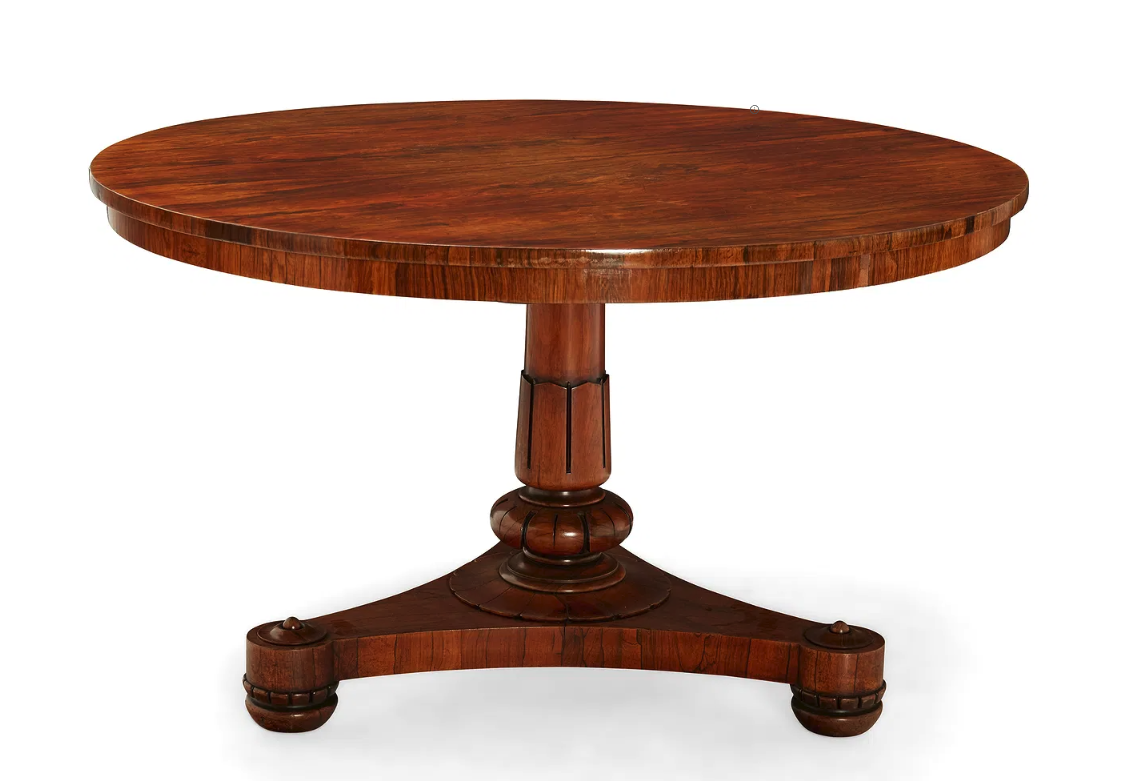
William IV rosewood tilt-top breakfast table
Early 19th century
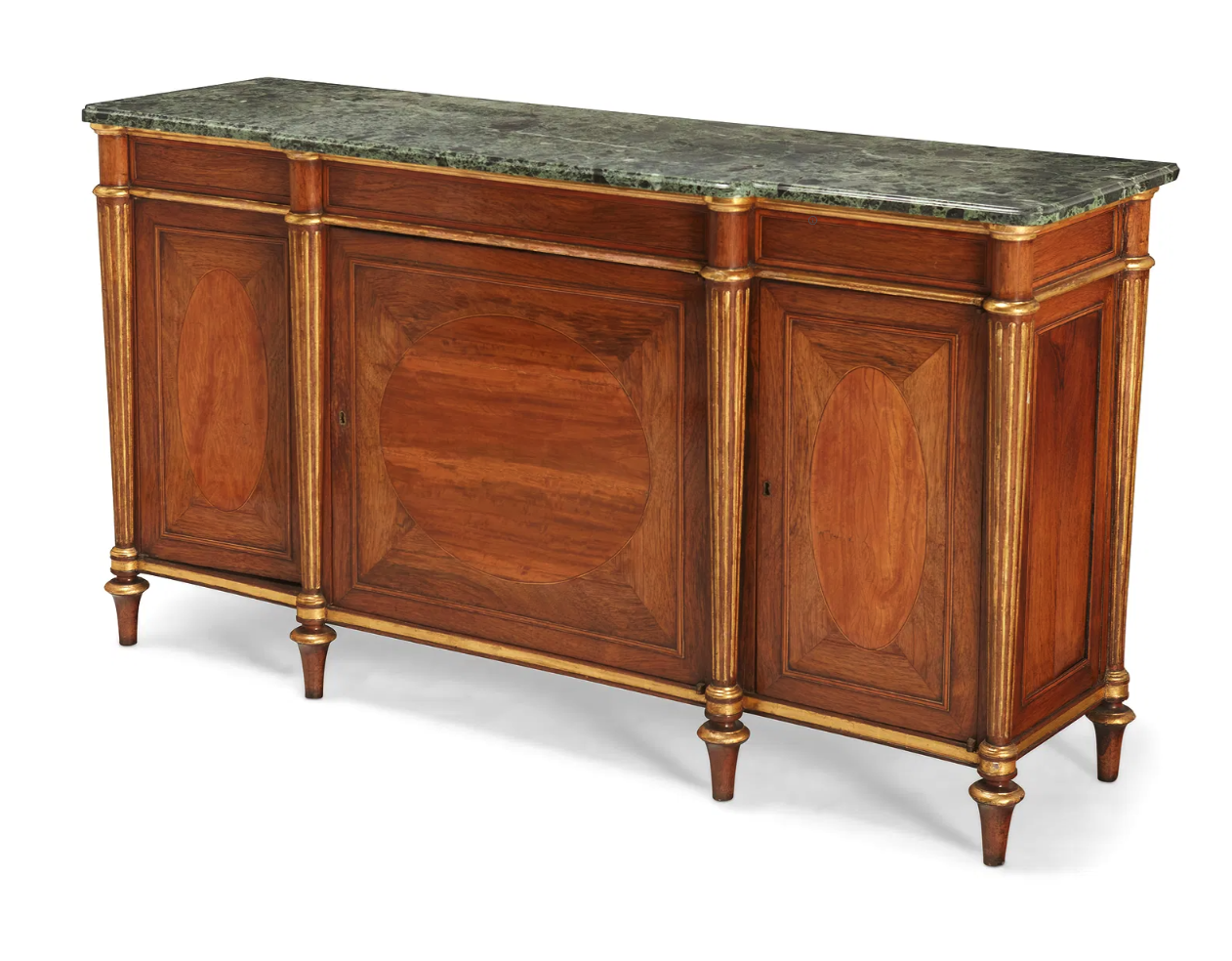
Regency parcel-gilt rosewood and satinwood cabinet
Early 19th century, in the manner of Henry Holland
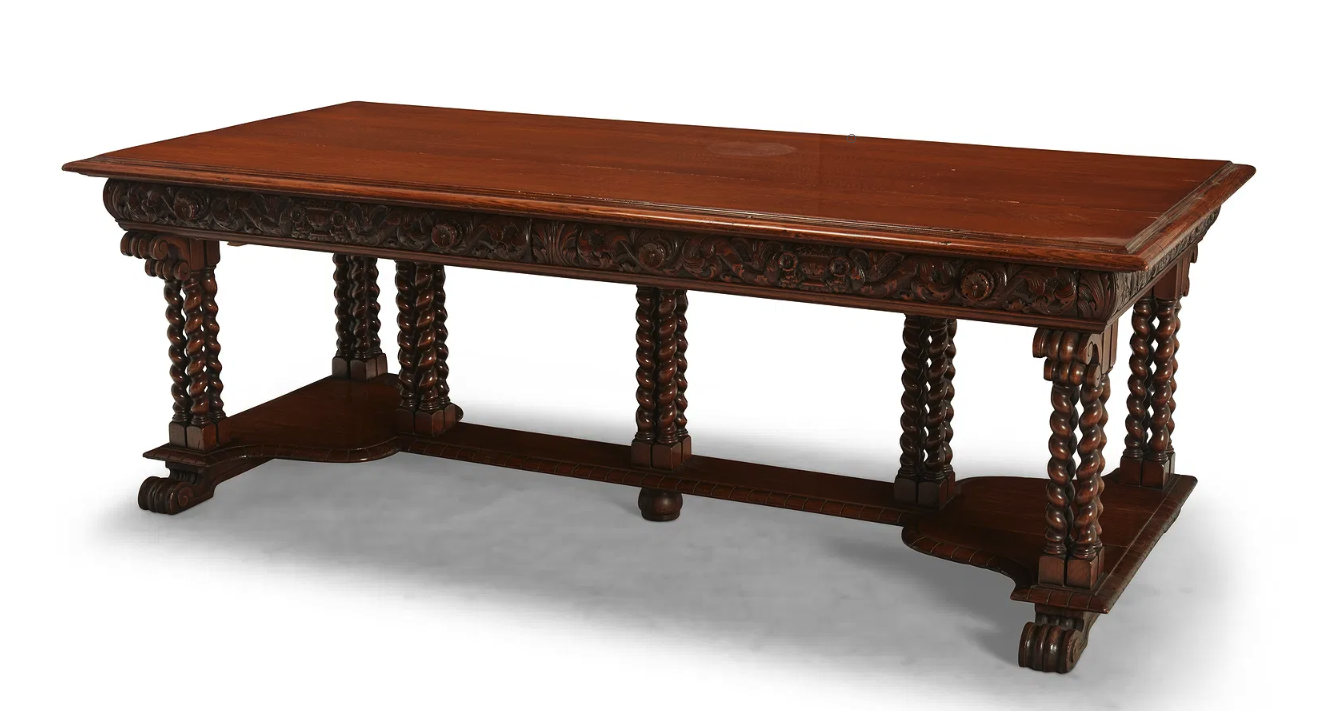
Victorian carved oak library table
Late 19th/early 20th century

George IV-style leather upholstered mahogany low chair
20th century
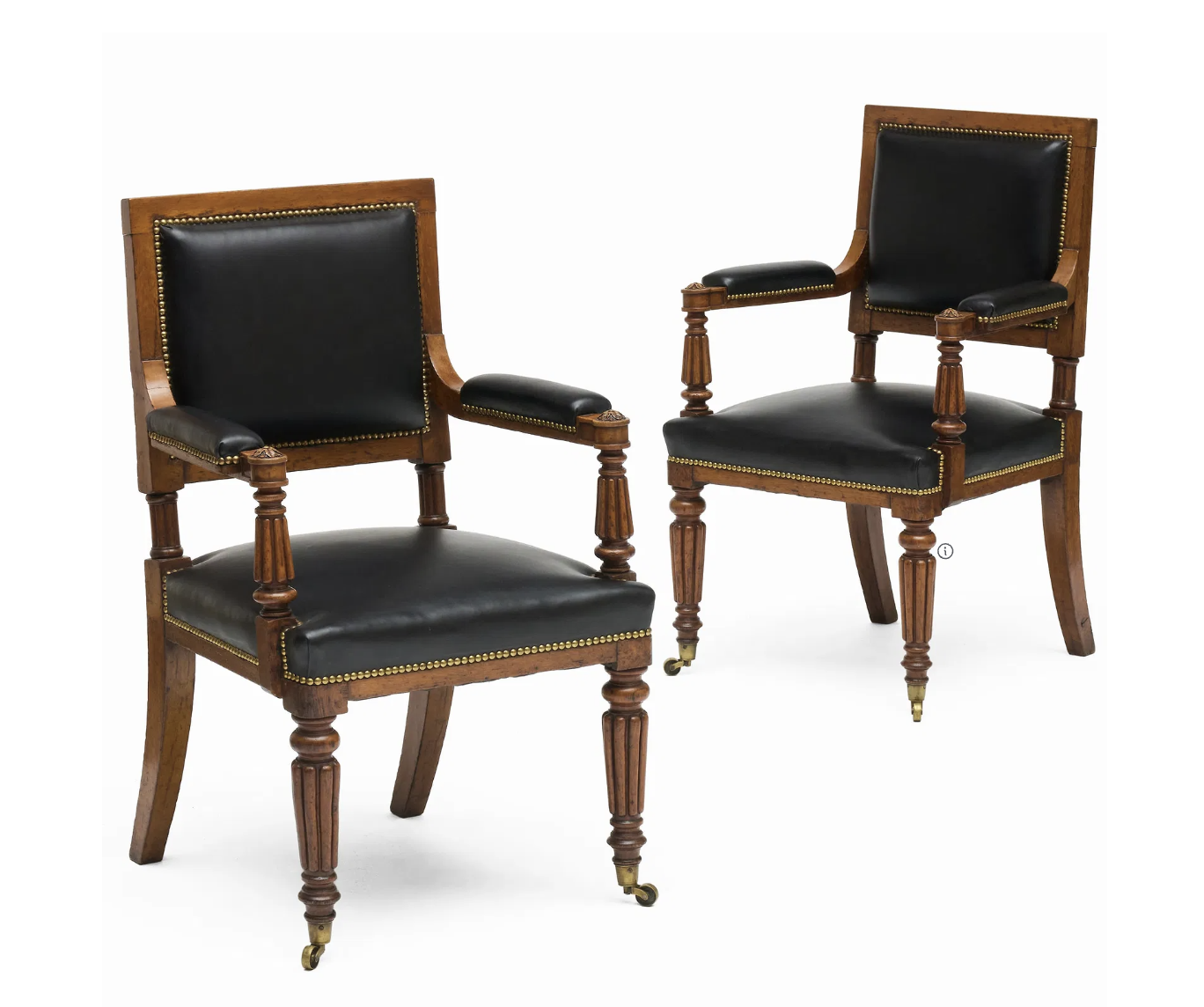
Pair of William IV Mahogany and Black Leather Armchairs
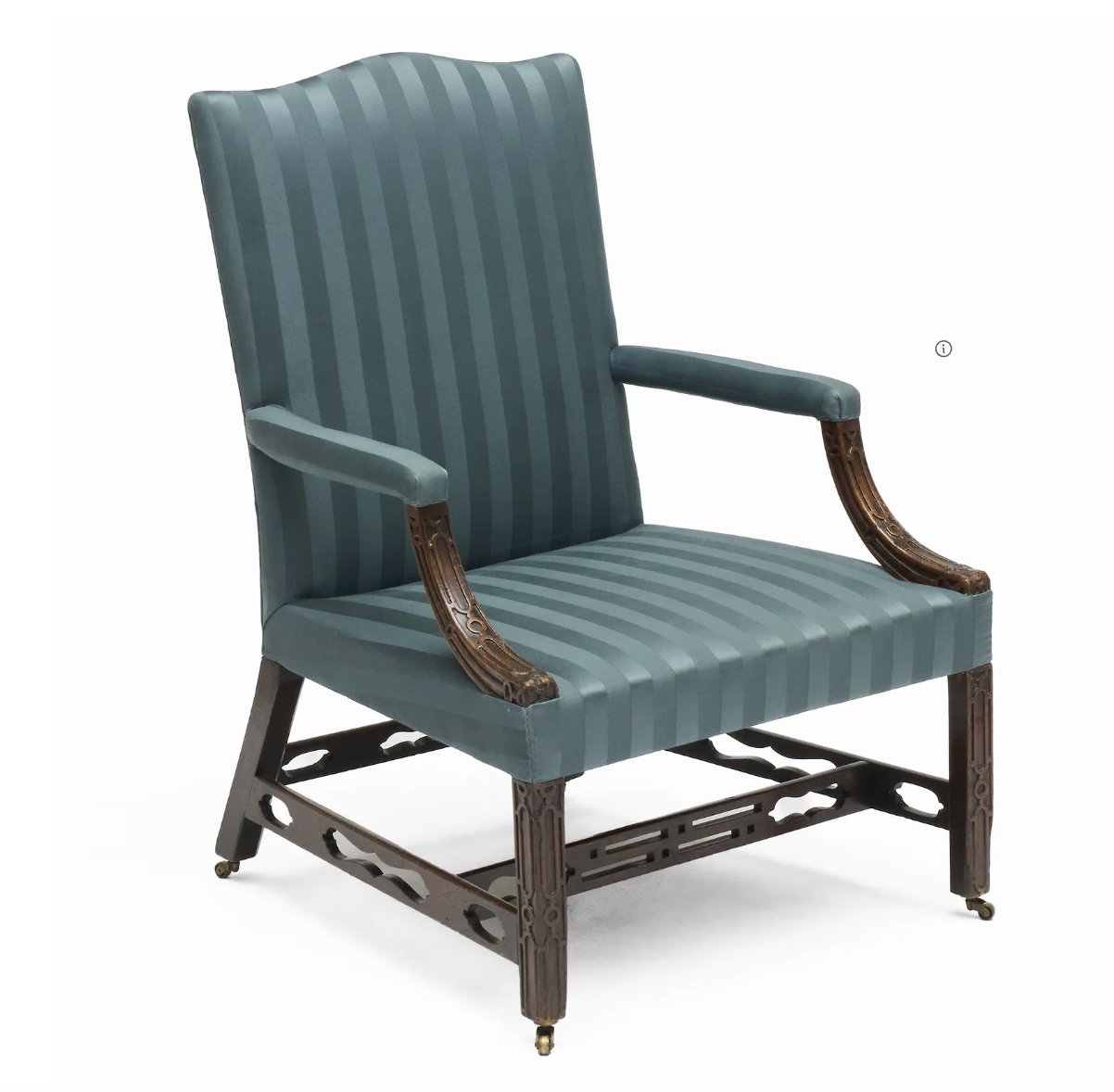
George III Carved Mahogany and Upholstered Library Armchair